Table of Contents
How to Build a Process for Growth Experiments
On the surface, it might look a little intimidating. But with a little more insight into how growth hacking works — and how marketers have successfully experimented with it before — you'll be on your way to producing your own results.
At its core, there are five significant pillars to growth hacking:
- Evaluate current marketing initiatives. Do a full audit that determines your best sources of leads, traffic, and page views. Figure out which channels are working for you.
- Set achievable goals. Determine where you'd like to improve these numbers, and think about how you can do so.
- Plan experiments to test your hypotheses. Come up with two, three, four, or twelve ways of testing your theories and how you can reach your goals.
- Let your experiment run. Test until your results are statistically significant. You can also continue optimizing until you reach your goals.
- Document your winning results, and share them with your team. Growth hacking is all about improving what you already have. If you come up with a game-changing tactic, spread the word.
We will go into more detail on how these pillars help structure the growth hacking framework.
For traditional marketers, this level of experimentation can appear overwhelming or even foreign. But it’s likely that you’re already performing Growth Hacking without knowing it; if you’re testing variables and learning from the outcomes, then you're a Growth Hacker.
Think about it — have you ever A/B tested a subject line in an email? That’s an experiment. Have you ever duplicated a high-converting landing page? Well, conversion rate optimization (CRO) is a significant component of growth hacking.
Anytime you update your existing content to increase the conversion rate, you’re growth hacking.
At the end of the day, growth hacking is about growth — in leads, customers, revenue, or anything that will help your business thrive.
The proper structure will create the most effective growth for your business. Developing a framework that will support your objectives is a great start. There are five basic steps to developing a growth hacking strategy.
As you go through each, document the entire process to share with other teams or new employees so everyone understands how to utilize growth hacking.
1. Define objectives.
Understanding what your goals are is the first step toward achieving them. Know what you are seeking to accomplish through growth hacking. Then, tailor your approach toward those specific objectives. These objectives should also be informed by research.
Evaluate your current marketing initiatives with a full audit. This information will help you determine what areas have room for improvement and how they can be formulated into a new objective.
2. Foster new ideas.
Do research for inspiration, and then build on what you find. Know what worked or didn’t and why — using your previous campaigns and others in your industry for inspiration. Use as much information as possible to help brainstorm the best way for your business to use growth hacking.
3. Determine priorities.
What is the most important goal for your business to achieve through growth hacking? Or where does your business need to improve the most right now? These are things to consider as you narrow down your growth hacking strategy. But be realistic. Growth hacking isn’t magic and isn’t guaranteed to work overnight, so set achievable goals.
4. Implement the new strategy.
Put your idea to the test! Develop a hypothesis based on the strategy you’ve chosen. Then, execute that strategy as you planned it with your team.
Problem-solve along the way and keep moving forward. Continue running experiments and new tests as you go to gather the most information about your hypothesis.
5. Measure and analyze results.
Did your strategy accomplish the intended objective? Were there impacts that you didn’t expect? Was your hypothesis correct? Analyze the overall result and effects of the implemented growth hacking strategy. Take that information and use it to inform your next strategy.
Continue applying what you’ve learned, and keep trying until you see a measurable change.
There are a lot of ways to incorporate growth hacking into your business. You can use one technique or several, mixing and matching them to improve effectiveness. It may take some trial and error to see which ones will work. When deciding which to try first, consider your team, budget, resources, and brand.
We compiled this list of 25 growth hacks you can practice with your current content assets.
Whether repurposing or creating something new, integrating small yet effective changes requires no massive undertaking.
1. Repurpose blog content.
Blog posts can stand to benefit from more than just edits. They have the potential to be transformational.
You may have heard that multimedia content is quite popular these days. But how do you develop ideas for what these videos should be about? That’s where your blogs come in.
You can adapt them as short recap videos or even podcasts to give your audience a new way to learn from you. Short-form video (Reels, Tik Toks, YouTube Shorts) is expected to see the most growth of all marketing mediums in 2023, so consider working it into your strategy.
Repurposing content helps you build a presence on multiple channels. For example, blogs tend to perform better in organic search results when composed correctly, but videos show more promise on social media.
2. Build social sharing links directly into your content.
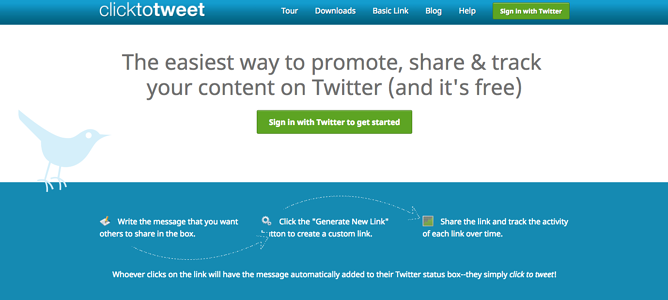
Speaking of social media — are you making it easy for your audience to tell their friends about you? If not, consider building easy sharing tools like “tweet this” buttons directly into your website content so that readers can share items they find particularly valuable without leaving the page.
This hack works particularly well with things like one-line quotes or statistics. Since Twitter has a 280-character limit, these short snippets are prime for sharing.
3. Test your conversion points.
Leads — they’re great! But where do they come from?
If you’re unsure where your leads are most likely to convert — on a product page, versus a pricing page, for example — you can use a non-intrusive exit intent pop-up to test different conversion points.
It’s one of the lead capture tools available in the HubSpot Marketing Free software, which helps to shed light on how leads behave on your website and how that can turn them into customers.
But again — be sure that this pop-up is non-intrusive, especially on mobile. Google penalizes sites with intrusive mobile interstitials, so make sure you’re creating something that doesn’t interfere with a positive user experience.
4. Embed live videos.
Are you planning a live stream, like a webinar or YouTube Live? Embed it.
You can embed certain types of live video on your website, providing an easy point of reference for people who want to tune in but maybe didn’t enroll in advance.
Plus, many of these videos can be shared on social media — that’s what makes one like YouTube Live so valuable since it’s also easy to share a “watch page” on many social networks.
5. Connect with industry experts.
Got writer’s block? No problem — let other experts do the work for you.
Around here, we love a good roundup — of website examples, Instagram accounts to follow, or valuable quotes. Try contacting industry experts on Twitter and asking a common question that you, your sales team, or your industry face. Then, compile their responses into a blog post.
We’d recommend being completely transparent about your use of these quotes. In addition to properly attributing the quote to the person it came from, make sure that the individual knows her name will appear in your blog post.
6. Take advantage of your highest-converting offer.
Once you can track where your leads are coming from, identify your highest-converting offer and break it out into multiple sections. From there, you can expand upon those sections for longer blog posts — and include a CTA for the offer at the bottom. Leads, upon leads, upon leads.
7. “Crowdsource” from your team.

Sometimes, the best blog posts are the ones that address a question being asked by many but answered by few. And as a growth marketer, it’s your job to figure out what those questions are.
To start, create a Google Form to send to your colleagues — in sales or whichever department might have the same pain points as your audience — and ask them to fill in the most prominent questions they ask or come across each day. Then, use that to develop blog posts.
If your colleague feels comfortable, consider using an interview format to highlight her insights.
8. Find your most talkative customers.
We’re not talking about the folks who could spend an hour explaining breakfast. We mean the customers who are the most active on social media. Curate a list of those accounts. When one of your social posts begins to perform well, fuel the fire by sending it to those contacts and asking them to share it.
9. Embed social media posts.
Social posts are meant for sharing. This includes embedding social media posts in your web content, like using tweets from happy customers as social proof.
But be careful not to embed these posts where they distract from your primary CTA — this hack is best used on post-conversion pages.
10. Cross-pollinate.
As a growth marketer, you may have heard the phrase “brand evangelist,” someone who makes efforts to get others on board with your brand, much of the time through public promotion.
Finding these evangelists is similar to finding your most active customers on social media, but this time, you’re blending your experienced customers with new ones to inspire the latter. Give both parties special access to an exclusive but social online space, such as Slack, where they can interact.
11. Create a custom audience on Facebook.
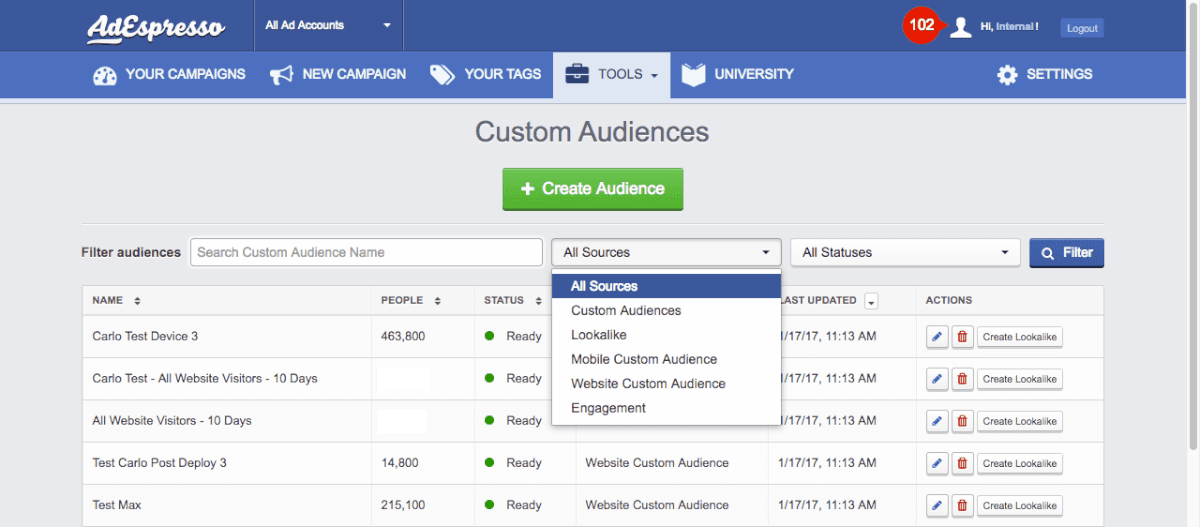
If you’ve ever created an ad or promoted post on Facebook, you know that one of the steps is to select certain criteria. That includes locations and interests that can target your audience.
Identify your best customers, and see if any common denominators are included in these criteria categories. That way, you can create a custom, lookalike audience that emulates your current “fan base,” helping you to grow where you’re already doing well.
When creating the ad, however, ensure your current customers are excluded from the audience. Facebook provides helpful instructions on how to do that here.
12. Use Twitter retargeting.
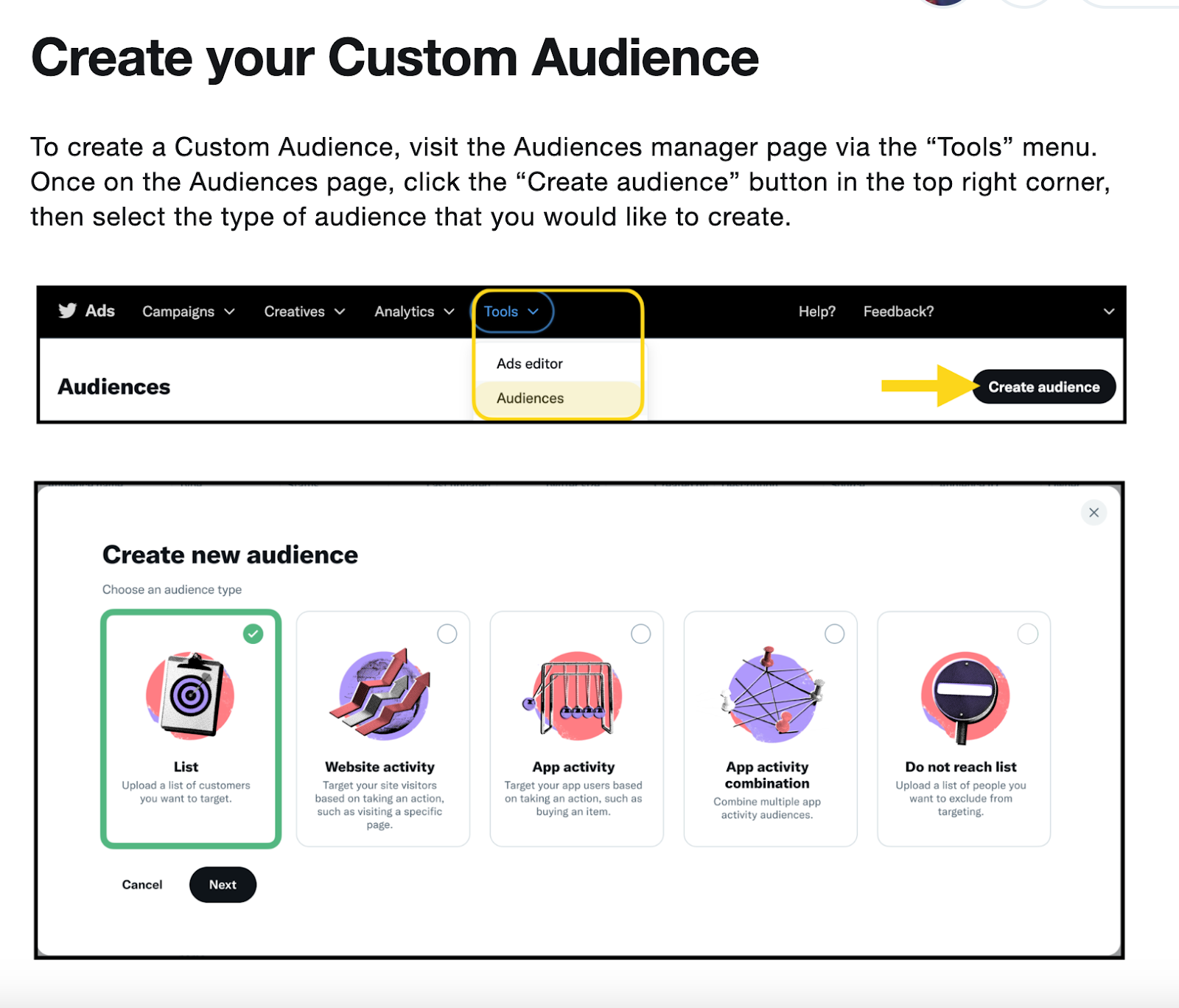
Twitter offers an ad personalization feature called Tailored Audiences. This allows brands to create sponsored tweets that target users most likely to be interested in their products and services.
This feature allows you to retarget the people already familiar with your brand from a website visit or another previous interaction — it’s a great way to move prospects through the buyer’s journey. For instance, you might have one campaign that targets website visitors and converts them into leads.
Another may target leads and converts them into marketing qualified leads (MQL). MQLs, for reference, are leads that are more likely to become customers based on the behavior that earned them that status, and the HubSpot Growth Platform can help you seamlessly manage this journey.
You can also create a campaign that targets your current customers to generate referrals — another way of cross-pollinating your existing audience with a new one.
13. Make multiple versions of one ad.
When you launch a new Facebook promotion campaign, publish three or four versions of the same ad. Not only does that help you target different audiences, but you may have one that outperforms the others.
That’s why it’s a good idea to keep an eye on the metrics of every version of the ad. Once you see if they are underperforming, you can deactivate them and reallocate that portion of your budget more effectively.
14. Tag your YouTube videos.
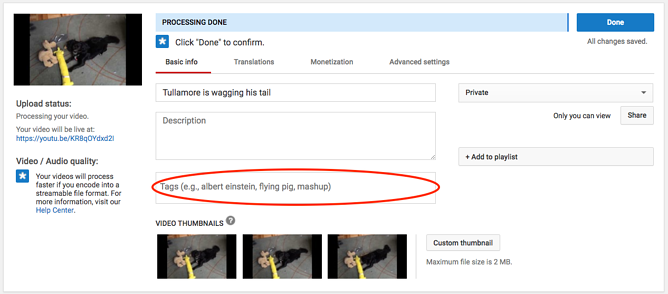
Keywords are more powerful than you think. For example, you might want your YouTube videos to appear in the search results for specific keywords.
That’s why we recommend tagging them with those words, and not necessarily for the video’s content. This growth hack can help your YouTube videos appear as “suggested content” for audiences you want to reach.
15. Do your ranking research.
SEO isn’t going anywhere in 2023. You need to know what’s already in the top ten results for those queries to rank for specific search terms. Search in an incognito window to help produce unbiased results since they won’t be based on your browser history. Take note of the top ten results.
Not only will that give you some ideas for content creation (don’t just copy the results verbatim, of course), but look within these results for opportunities to leave sincere, value-added comments that link back to your site. Some outlets like Quora and Linkedin encourage this type of discussion, so watch for those in the results.
16. Recycle old blog posts.
According to HubSpot’s Former Head of Growth and SEO, Matthew Barby, “In general, pages deeper in the architecture of a website will get a lower share of internal PageRank.”
That means that these posts would benefit from some reinvigoration. That presents an opportunity — to update these posts with new data, examples, or insights and republish them for a ranking boost.
17. Experiment with email.
No two email sends are created equal. That’s why even the same email needs to be tested with different versions, especially with a huge send.
Let’s say you want to send the email on Wednesday or Thursday. Test a few versions of the email on Tuesday with a small percentage of your total list, divided into even smaller sections for each version. That way, you can send the best-performing version on your desired date.
18. Make it easy to share.
Have you ever completed a transaction and received a CTA to share the product or service with a friend? You can do the same thing for your content offerings, like webinars.
Tools like Share Link Generator can create mailto links, which webinar registrants can use to invite their teams to a webinar they signed up for. Try to BCC yourself to make sure it’s working.
Here’s an example of what that looks like.
19. Get feedback from real people.
Sometimes, we’re so focused on growing by way of acquiring new users that we forget about our existing ones. And often, they’re the best source of information, especially regarding ways you can grow your product.
Try inviting existing users to a “VIP Beta,” where you can gather their feedback on new products, features, or campaigns. That can help you test positioning and delight your customers before a big launch. You’ll gather great insights for your campaign while showing your existing users that you value their perspectives.
20. Look for external collaboration opportunities.
It’s easy to think of brands similar to yours as competition automatically. But look again — do your products and services compete, or do they complement each other? If it’s the latter, you may have just discovered a promising co-brand.
Run a co-marketing campaign with a partner company with an audience interested in your brand, but that is difficult for you to reach. Make sure your partner would benefit from your audience, too. Remember, you want the experience to be a win-win for you, your co-brand, and the consumer.
You should also consider investing in influencer marketing, which is expected to grow significantly in 2023. Behind short-form video, influencer marketing comes in second for the trend marketers plan to invest in more than any other in 2023, and 89% of marketers using it will increase or maintain their investment next year.
21. Illustrate progress.

Let’s say you offer free resources to help new users become better at learning your product or learning your industry in general. Keep them updated on that progress, which may help to mitigate the risk of abandoning the learning process.
One way to do that is to include a progress bar in emails to show the recipient how far along she is in completing a task. For example, show her that she’s already completed the first step — like enrolling or signing up — and then explain what to do next.
22. Create free tools — not just free content.
When composed correctly and carefully, blog posts can give your audience a good amount of (free) value. But it shouldn’t end there. Demonstrate your product or service's value to give prospects a taste of what they’ll get when they sign on as customers.
While other digital content, like videos, can teach your prospects and build trust with them, free tools like calculators, kits, and templates help them experience the benefits of your products more directly and illustrate what they stand to gain by becoming a customer.
23. Customize landing pages for different channels.
To help reach the right users, try creating landing pages unique to the distribution channel you’re using to capture leads. For example, if you’re using a Facebook ad to capture a lead, it should send the users to a short, mobile-friendly, easy-to-tap form. Meanwhile, a landing page designed for organic search might contain more text for search engines to index.
24. Clip it and share it.
Get more value out of every webinar you host. Take inventory of that footage, and find the short segments that are most informative, even when they stand alone. Those clips can be isolated and repurposed into five-minute videos to share on social media or other content. Be sure to link back to the original, full webinar in the description of each video. If it’s gated by a form, for example, that can help you generate leads.
25. Use niche social media networks.
TikTok, Twitter, Instagram, and LinkedIn aren’t going anywhere in 2023, but dominating these platforms in a competitive industry can be challenging. In addition to traditional social media efforts, you should consider diving into niche social media platforms to reach a more specific audience that is already aligned with your industry.
The more focused and targeted your audience is, the greater your chance of success. That’s Marketing 101. Niche social media platforms have a level of targeting baked into their user base, so you can expect results if you hone in on the right platform for your brand. Examples include:
- Dibbble - portfolio and social platform for designers and creatives.
- Twitch - live streaming site with a focus on e-sports and gaming.
- Discord - free video, text, and voice chat service where users can create servers for specific interests and industries.
How to Build a Process for Growth Experiments
To grow, you have to find ways to experiment. The problem is finding time to do that correctly, especially when you have multiple other tasks and ideas. That’s why building a sustainable process for recording and implementing your ideas as experiments is essential. By figuring out these steps, you’ll enable your team to effectively write down ideas, prioritize experiments, and put them into practice.
But where do you begin?
1. Start with the scientific method.
Ah, yes. We’re back to Week 1 of any science class you've ever taken. As it turns out, you really do use some of that elementary school information in real life.

When it comes to building a process for experimentation, it comes down to following the scientific method. Create a way to brainstorm ideas, construct and implement hypotheses, and prioritize your ending analysis and conclusions.
Building this process for your team isn’t a one-and-done deal when experimenting for growth. Instead, according to Balfour, an exemplary process has to be:
- Scalable.
- Predictable.
- Repeatable.
In other words, it’s not enough to say that the scientific method is your process. Instead, use the scientific method as a template to structure your internal process.
2. Always have a goal in mind.
Once you have your process down, the next step is to set goals, which might sound simple in theory. But the goals of any given experiment can‘t just be "growth" — because growth alone isn’t measurable. Instead, every experiment you run should have an actionable and testable outcome, meaning you have to start small.
Let’s break it down with an example:
- What's the overall goal? Revenue growth.
- How are you going to drive more revenue? By acquiring more leads.
- How will you do that? Increase the conversion rate of my lowest-converting lead generation campaign.
- What is your campaign-specific goal? Increase conversions on one landing page by >5% and find statistically significant results.
- How will you implement an experiment to meet that goal? A/B test the title of the lead generation offer.
You can see from the example that while increasing your revenue is an admirable high-level goal, it’s not actionable unless you break it down into actionable experiments. And tying a metric to your experiment — in this case, increasing conversions by greater than 5% on one landing page — makes it actionable.
If you need help setting actionable goals for your experiments, start with that high-level goal and work your way down an incremental path until you have something that you can tie to a metric.
3. Encourage and enable brainstorming and hypothesis.
Building a culture of experimentation within your team requires the encouragement and motivation to always be brainstorming. That's why building a mechanism for tracking and recording those brainstorms is essential for any good growth experiment process.
Whether it’s an Excel sheet, Google Doc, Trello board, internal wiki page, or any other tool your team typically uses for internal documentation, make sure there’s room for any and all brainstorming.

Still, it’s not enough to just throw raw ideas into a document somewhere. Instead, you must require your team to take those brainstormed ideas and turn them into actual hypotheses based on research.
Here’s an example of what this looks like in practice:
- Idea from brainstorm doc: Use a pop-up modal instead of an in-line CTA to increase conversions on our blog posts.
- Research: Our in-line CTAs are only converting at a rate below 1%. Using a slide-in or pop-up CTA could make the CTA more visible to boost conversions.
- Hypothesis: Using pop-up modal CTAs will increase our conversions from blog posts to landing pages by >2%, with statistically significant results.
4. Figure out a way to prioritize what comes first.
Once you’ve enabled brainstorming and hypothesis-writing on your team, you’ll find that you have more ideas than you know what to do with. That's not bad — remember that growth occurs because of many moving pieces. The more things you have to test, the more you’ll be able to grow over time.
With hundreds of ideas being thrown around, you'll have to figure out how to prioritize which experiments you put resources into first and why. While there are many ways to do that, at HubSpot, we often use the PIE method: “Priority, Importance, Ease.”
We execute this method by compiling all of our ideas into one document and then rate each project on a scale of 1-10 in the categories of Priority, Importance, and Ease.
Then, we take the totals for each category and divide those numbers by three. That gives us a PIE score to rank each project, and we can better determine which experiments or projects to work on first.

No matter what process you use to prioritize experiments, always focus on the ideas you think will have the most significant impact. That can help you prove the value of your experiments to your company and drive that culture of experimentation forward.
5. Take time to design and implement effective experiments.
Now comes the fun, albeit most challenging part — implementing your experiments.
Whether you’re performing an A/B test on a landing page, analyzing creative content on your social media ads, or looking at the full conversion path of your lead generation offers, take the time to think through the details of your experiment thoroughly. Here are a few tips to keep in mind.
Test one thing at a time.
The more variables you have in one experiment, the less meaningful your results will be. If you test one landing page design against a completely different landing page without any experiments in between, your results won’t tell you much about what worked in that experiment.
Instead, if you test one variable at a time — like the title, imagery, colors, fonts, and module placement — you’ll be able to learn from each experiment which variable is causing a difference in results.

Set up a way to measure your results before the experiment begins.
Many of your experiments will require a specific tool to help you perform them. Whether you’re using a content management system like Content Hub or designing an experiment by hand, understand how you will measure and assign meaning to your results before you get started.
Set a timeframe.
How long will you let your experiment run before you call the results — one day? Two weeks? Until the results become statistically significant? Setting a timeframe will help make your experiments more accurate and help you track results.
Once you’ve set a time frame, set a reminder to analyze the results on the day the experiment is complete.
Learn from experience.
Use your experiments' findings to develop new ideas for future ones. Your experiments don’t have to be a one-time engagement. Good growth is built on a culture of constant experimentation.
6. Always analyze your experiments.
When the timer goes off and your experiment is complete, you must analyze and record the results and use them in practice. But it's more complex than learning if your hypothesis was correct. Instead, the analysis needs to answer the following questions:
- Was my hypothesis correct or incorrect?
- Are the results of my test statistically significant?
- What do my results mean?
- What could/should I have done differently in this experiment?
- How can I use these results going forward?
- What should my next experiment be to build on this finding?
Building a culture of experimentation isn't just about getting a “pass” or “fail” answer on an experiment. Instead, true analysis happens when you think about what the results say about your efforts and how you can use what you learned to move forward with new experiments.
7. Share and systematize your learnings.
Before you repeat this process in your next experiment, it's critical to share the results of your experiment with your colleagues. Sharing information internally is an excellent way to encourage transparency and generate feedback — which can help you build upon a history of experimentation.
At HubSpot, we use an internal wiki for employees' post-experiment results and all kinds of internal information. It’s a great way to keep everyone in the loop on what’s going on and get feedback from colleagues who might be interested in your findings.
You can also keep a running document of your experiments so that the findings are easily accessible in one place. For example, you could create a document where you track all of your A/B tests from your landing pages or all of your tests on CTAs.

8. Build on what others have done before you.
Now you know how to build a growth process that will be scalable, predictable, and repeatable. But if you’re like me, you probably want a document to use as a starting point and build from there.
Download these free Growth Marketing Experiments Templates you can use and customize for your internal process.
Growth Hacking Ideas
It may seem like growth hacking ideas need to be original or super creative. But, there are a lot of existing plays that you can apply to your business.
You can always adjust or tweak what has worked for other companies to fit yours. Or, simply take the inspiration and create something brand new. Check out some simple ideas below as a starting point for brainstorming.
Make it easy to connect with your business across multiple platforms and websites.
No business should be an island. Make it seamless for customers to find your website and social media accounts. If your customers need to embark on a wild goose chase to find your LinkedIn page, you can rest assured they’ll look elsewhere.
Consider using a link in bio tool like Linktree to consolidate all your online profiles into one easy-to-access place for your customers.
Offer a price so low it could go viral.
This is a self-explanatory strategy, but it takes some courage to pull off. If you offer your product at an unbelievable discount, word spreads quickly. However, you’ll need to do your homework and determine how much money you are comfortable losing in the short term to bring more customers through the door.
Provide incentives for sharing your business.
Even though we live in a digitally connected world, the power of word of mouth is nothing to scoff at. If you can incentivize your customers to recommend your product/service to others, you’ll see significantly increased growth in all areas.
You might consider offering discounts, gifts, or other creative incentives to customers who help bring in more business.
Create FOMO with invite-only or limited, exclusive access campaigns.
Understanding human and consumer psychology is one of the keys to success in growth hacking, and the power of FOMO isn’t going anywhere.
You can reliably drive sales, user acquisition, or whatever metric you focus on by making an offer that customers feel compelled to take advantage of before it goes away.
Like any other marketing strategy, growth hacking is better with the right tools. Choosing the right tools will support and simplify implementation and increase overall effectiveness. The tools you’ll use will vary depending on your growth hacking strategies.
Here’s a list of helpful tools to get you started.
1.HubSpot
HubSpot’s software is a growth platform that offers a full suite of marketing, sales, and customer service software. Get started with the free HubSpot CRM to manage your sales pipeline, schedule meetings, and track emails. And use Marketing Hub and Customer Hub for marketing automation, building your website, converting contacts, and connecting with visitors.
2.Click to Tweet
This free tool allows you to promote your content on Twitter. Type up a message you’d like others to share, generate a link, add the link to your content (e.g., website, landing pages, email), and track the number of clicks.
3.Consumer Barometer
Consumer Barometer is a free tool from Google that provides information about online consumers. You can gain insights into your audience's internet behavior and use their graph builder to create a custom analysis you can use to inform your decision-making.
4.SurveyMonkey
This tool allows you to perform market research and gather customer feedback. Use SurveyMonkey to create a survey, build custom reports, and analyze the results.
5.Amplitude
Amplitude offers a variety of software options that allow you to analyze your products and see how customers interact with them. The insights can help you improve user engagement, optimize conversion, and give you a better idea of the direction to take your product strategy.
6.CrazyEgg
This tool allows you to visualize where your visitors click on your website with CrazyEgg Heatmaps. And use the Snapshot tool to get a digital snapshot of your site page, with reports that display your visitors' click behavior.
7.SessionCam
SessionCam is a cloud-based suite of tools to help you visualize visitor behavior on your site. Key features include heatmaps, customer journey mapping, and struggle detection to see where you can improve your website experience.
8.Arel=“noopener” target=“_blank”hrefs
Arel=“noopener” target=“_blank” hrefs can help you optimize your website and blog to drive search traffic. In addition, you can research your competitors to see how they rank in search results, audit your site’s SEO performance, explore keywords, and more.
9.TrueNorth
TrueNorth is a growth marketing platform for forecasting your growth, collecting and prioritizing experiments, planning, and automatically pulling results to help you centralize your marketing in one place.
10.Zapier
Use Zapier to automate your web applications. It builds connections between your apps and allows you to trigger tasks, like adding contacts to email lists or creating a new item on your to-do list.
For a more precise understanding of growth hacking, it’s great to have some examples. It’s a fairly broad concept, so each company may apply it differently.
We interviewed four growth marketers from some of the top tech companies in Boston to give you a more in-depth explanation of how growth hacking can manifest into a strategy. The experiments they ran yielded significant results. Check them out below.
1. Creating educational videos to onboard new users (Wistia)
First up is Andrew Capland, the Growth Team Lead at Wistia. For the video hosting platform Wistia, getting a video into a new user‘s account is the first important step in the onboarding flow. Once users upload a video, they can explore all of the core Wistia features, like customizing player colors according to the brand and adding lead generation tools or clickable links. After experimenting, Andrew’s team produced a 15% lift in onboarding metrics. Here, he explains how:
Objective/Hypothesis
Capland's team zoomed into the data and noticed that many users who borrowed a video from Wistia just to complete that onboarding step actually viewed it — which presented an opportunity.
“We realized there could be an opportunity to use that video for additional product education,” said Capland. “We believed that we could increase our active users by making our 'loaner' video more educational and product-focused.” Wistia decided to test this hypothesis by creating a new video that gave a tour of the media page and taught users how to use the Wistia tools.
Here's the old video:
Experiment Plan
Wistia created a new video — which we've shared below — for their users to borrow and showed it to 50% of visitors.
Results
The new variation produced a 15% lift in one of Wistia's main onboarding metrics, leading to more account activations and sales.
2. Improving homepage conversions with product messaging (Trello)
Jessica Web, a Growth/Content Marketer, and the team at Trello needed to find the best way to position the product on its homepage to make the best impression on new site visitors. The team ran an experiment to test different messaging options, ultimately increasing homepage conversions by 2%. Here's how:
Objective/Hypothesis
The homepage serves as Trello's most influential real estate for new users to learn about the product and sign up. The team was looking to determine the best messaging to accomplish that and came up with the idea that experimenting with different themes would be a good way to see what resonated most with visitors.
“We didn't know if productivity, collaborating, project management, or something else would be the best way to position our product,” Webb reported, “so we decided to let the data speak for itself.”
Experiment Plan
Webb's team tested 11 different messaging headlines on the Trello homepage — English-speaking only, on both web and mobile. The experiment ran until a statistical significance was determined, which, in the end, only took about two weeks,
To give you an idea of what that might look like, the test variants were labeled with internal language and included the following:
- default
- collabToolPerspective
- projectPerspective
- platformPerspective
- visualTool
- organizedTool
- collabTool
- teamPerspective
- youPerspective
- sharedPerspective
- platformSharedPerspective
Results
The experiment resulted in a 2% increase in sign-ups with the “collabtool” variant. That makes sense since Trello is a collaborative project-tracking tool.
And it didn't end there. “We also used the winning messaging to inform other pages,” Webb said, “and make them more collaboration-focused as well.”
3. Reducing form length to increase conversions (InsightSquared)
InsightSquared is a company all about data. So, when Lindsy Lettre and her marketing operations team began to evaluate how to increase conversion across its website, they realized that their long forms might be stopping people from completing them. After an experiment that removed an optional field, the team created a new form that converted 112% better than the old form.
Objective/Hypothesis
The previous long form — which was required for visitors to download any content — had some required fields and others that were optional, like “Phone Number.”
“We had a hypothesis that if we presented a short form to our audience, we would see increased conversions,” Lettre said, “as the form would look less daunting.”
Experiment Plan
First, the team looked into what percentage of people provided a phone number when they filled out a form, which was only 15%. The next step was to run an A/B test on an eBook landing page for 30 days to see if the field removal made any difference.

Results
Once the experiment was underway, Lettre's team saw that the form without the optional field converted 112% better than the old form. That was a statistically significant result — and all other content forms were subsequently updated in the same way.

4. Increasing the number of certifications held by each student (HubSpot Academy)
Eric Peters, a Growth Marketer, and his team released five new HubSpot Academy certification courses throughout 2016. It became necessary to find a simple way to introduce those courses to existing students without knowing which skills that section of the audience was interested in developing. But the team had an idea — add a status bar to emails that indicated how far along the student was on various certifications. That increased the number of certifications per user by 18%.
Objective/Hypothesis
This experiment aimed to increase the number of HubSpot Academy certifications held by each student. “Our goal was to reach 1.5 certifications per user by the end of 2016,” Peters said. He hypothesized that showing users the status of their certifications would provide functional value that also introduced them to other courses.
Experiment Plan
Peters and his team began by implementing a module that displayed all of the certification badges one could acquire, in grayscale, within Academy emails. If the user had achieved that certification, it was orange, but once it expired, it would revert to grayscale. In addition, the badges were hyperlinked to a main page listing all courses.
“We built this module directly into one of our main email nurturing templates, so it immediately went live in dozens of nurture tracks and hundreds of emails,” Peters explains, “depending on which stage a user is in for each of our 12 certification courses.”
Results
Initially, there were a few bugs that made some student statuses reflect incorrectly — for example, the certifications they held weren‘t orange, or they didn’t realize that the certification had expired. But, as it turns out, the experiment proved to be a great way to remind the community that certifications do expire.
After a few days, these little status icons received a remarkably high number of clicks — specifically, the orange ones that showed a user held an active certification. After speaking to some users, Peters and his team learned that they were proud of their orange badges and wanted to get more of them.
“We are still not at 1.5 certifications per user, so we did not reach that overall goal,” Peters said. “But we have increased the number of certifications per user from 1.1 to 1.3 — up 18% — thanks in part to this experiment.”
Knowing how to grow any property, whether a blog, a podcast, or a brand is imperative. That might be what I love the most about the HubSpot Growth Platform, for example. It was built with the idea that every marketer benefits from understanding how growth hacking works. But where do you learn this stuff? Download our free marketing tool that helps you generate more leads and learn about website visitors.
5. Offering a killer referral program (Dropbox)
It’s no secret that referral marketing is effective, and Dropbox’s referral program puts on a clinic for referral success.
Objective/Hypothesis
The marketing minds at Dropbox knew that generating referrals was a solid strategy for growth. However, they wanted to take things further by rewarding people for referring friends and accepting the invitation. The Dropbox team took inspiration from PayPal’s early referral program, in which they offered cash rewards for referrals and granted early adopters $20 free cash in their accounts.
Experiment Plan
Dropbox went above and beyond traditional referral techniques by offering double-sided incentives, meaning the referrer and the referee were rewarded for a new sign-up. In Dropbox’s case, both parties received 500 MB of free storage per referral up to 16 GB. Not a bad deal!
No one wants to feel like they are being pushy or sales-y when recommending a new product to friends, so Dropbox turned the referral process into a win-win scenario. Dropbox removed a psychological barrier that may have disincentivized users from making referrals in the first place and made accepting the referral more attractive.
Results
The results were spectacular. Dropbox saw 3900% growth over 15 months! Numbers like that simply can’t be argued with. Today, Dropbox’s referral program is considered one of the most outstanding examples of growth hacking success in the tech industry.
6. Manufacture FOMO with invite-only access (Slack)
Slack is a household name, especially in tech and marketing circles. However, this wasn’t always the case, and their success was no accident. Stewart Butterfield, CEO of Slack and Flickr founder, used classic psychological marketing techniques to create a sense of exclusivity around his product that got people excited to give Slack a go.
Objective/Hypothesis
The objective was to kick-start the growth of Slack by creating a sense of buzz that made potential users feel eager to try the product. The strategy was to make access to Slack invite-only for select individuals and organizations in the early stages of the product. From there, Butterfield hypothesized that word-of-mouth would spread as professionals discussed their exclusive, special access to a cool new product, which was only available to a select few.
Experiment Plan
Slack contacted select companies before launch to introduce their product and offer exclusive access. After launch, Slack restricted access to only those who received an invite from existing users. Otherwise, if you wanted access, you had to request it directly from Slack.
Results
The exclusivity and invite-only access was successful in manufacturing FOMO. Of course, who wouldn’t want to try a hot new product only available to a select few? Curiosity peaked, and metrics peaked as a result. Within two years of launch, Slack achieved over 2 million active users. Today, that number is over 18 million.
Not only was Slack’s invite access crucial in generating early hype and success. It also allowed them to roll out their product in a controlled fashion and scale with a growing user base at their desired pace. In addition, more intentional and steady growth translated into an improved user experience since they could respond to early feedback and iron out any creases before a public launch.
7. Getting in front of new users with a helpful integration (Airbnb)
You may be familiar with AirBnb’s viral Obama O’s campaign, which generated over $30,000 selling political novelty cereal during the 2008 Presidential Election. The founders used this cash to pay off credit card debts and jump-start the household home-sharing name we know today. However, this is the first example of the company’s penchant for clever growth marketing techniques.
Objective/Hypothesis
Airbnb knew that many people used Craigslist to post and browse rentals and alternative housing listings. So, they slyly set out to infiltrate Craigslist and get in front of users who are clearly in the market for services like theirs.
Experiment Plan
AirBnb’s plan was two-pronged.
First, they encouraged existing Airbnb users to cross-post their listings to Craigslist; and they made it easy using a one-click button that generated a Craigslist post that linked back to the Airbnb listing. Airbnb incentivized users to post to Craigslist because it promised more eyes on their listings, and Airbnb would stand to benefit from the free marketing. AirBnb made the feature even more valuable by designing it to auto-populate details and pictures from their listing on Craigslist.
Second, they contacted existing Craigslist hosts and encouraged them to join Airbnb. Together, these strategies helped Airbnb reach Craigslist’s already massive user base.
Results
Airbnb’s efforts were a resounding success. By making it easy for users to cross-post their listings to Craigslist and encouraging them to do so, AirBnb achieved an Olympic feat in the world of growth marketing. The influx of new users fueled AirBnb’s momentum towards becoming the world’s premier home-sharing platform, with millions of listings across 190 countries.
A Google search for "growth hacking" yields a plethora of results. But as the term gains more popularity, filtering the results for the best resources becomes more difficult. However, there are some growth hackers that stand out from the crowd.
1. Sean Ellis (GrowthHackers)

Let’s start with the obvious. When you want to learn how to grow, the URL “growthhackers.com” seems like a natural place to start. Its founder and CEO, Sean Ellis, was pretty much a “growth hacker” before that label was a thing — since 2008, he’s served in interim growth roles at companies like Eventbrite and Dropbox, helping them scale in their early stages.
GrowthHackers is a community of resources and experts that "helps teams unlock their company’s full growth potential." And it’s within that community section of the site where the greatest wealth of knowledge lives. From a forum of growth-related posts to a section on growth case studies, this destination is one of the most comprehensive growth hacking resources available online.
2. Brian Balfour (BrianBalfour.com)
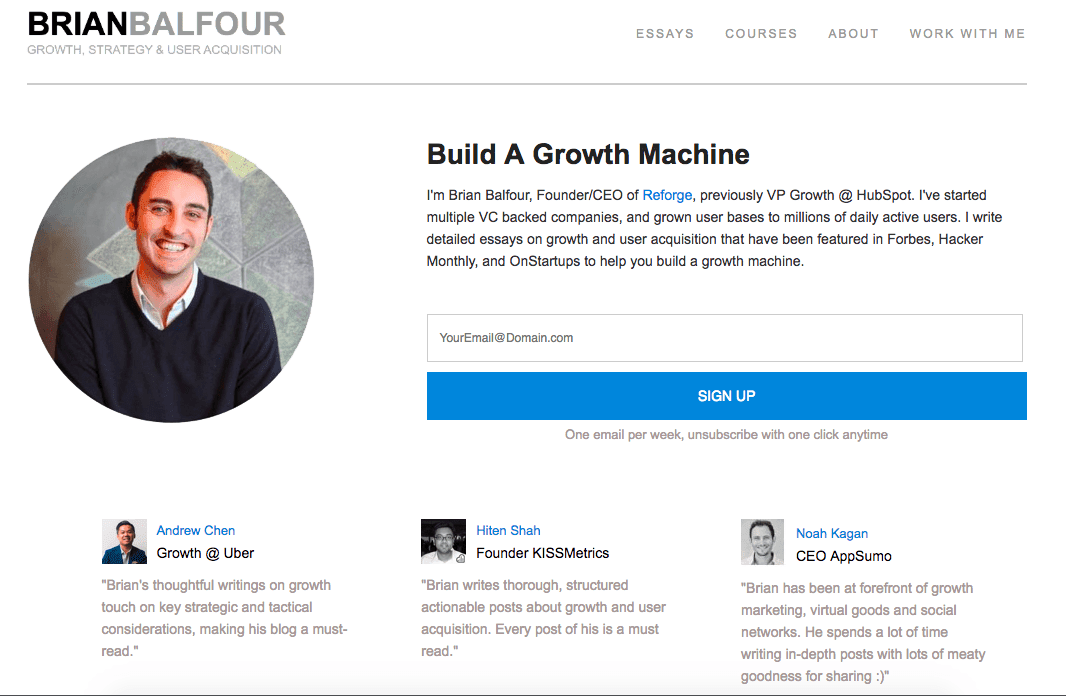
Growth hacking is as simple as improving and optimizing your existing marketing efforts through experimentation. Brian Balfour, former VP of Product at HubSpot and a thought leader in the world of growth marketing, is an expert in building a process for experiments that enable growth over time. He’s also widely versed in the startup sector. He's been known to quote the words of investor Paul Graham: “Startups = Growth.” And on his website, he frequently pens essays about many topics under this umbrella, like “10 Reasons Why Companies Fail at Growth” and “Traction vs. Growth.”
Balfour speaks with a unique skill set. In addition to being the co-founder of startups like Viximo and Boundless Learning — both acquired — he also worked in venture capital (VC) as an entrepreneur-in-residence. As a result, he views growth from the perspective of both the entrepreneur and the investor. You can also follow his insights on the blog for Reforge, his growth program creation business.
While he emphasizes that there isn‘t a one-size-fits-all solution for growing your business, he has some tips for building a process for growth experiments. And that’s what will ultimately move the needle for your company. We'll take you through the steps of building a sustainable process for growth experiments based on Balfour's tips. Once you establish an experimentation process that works for your team, that buzzy growth term might seem attainable after all.
3. Andrew Chen (AndrewChen.co)

Since its 2009 founding, one thing has been certain about Uber: It's experienced unequivocal brand growth. And it’s the kind of growth that can only be achieved with the right scale, and expert Andrew Chen was brought on board to oversee it all as Uber’s head of rider growth.
And in addition to serving as a general partner at Andreessen Horowitz, Chen continues to share insights on his website, Andrewchen.co. His knowledge stems from his experience, much like Balfour, as both an entrepreneur-in-residence in the VC sector and as what he calls an “entrepreneur-out-of-residence” — in both capacities, he’s helped to grow early-stage businesses like Barkbox and Tinder.
4. Brianne Kimmel (BrianneKimmel.com)
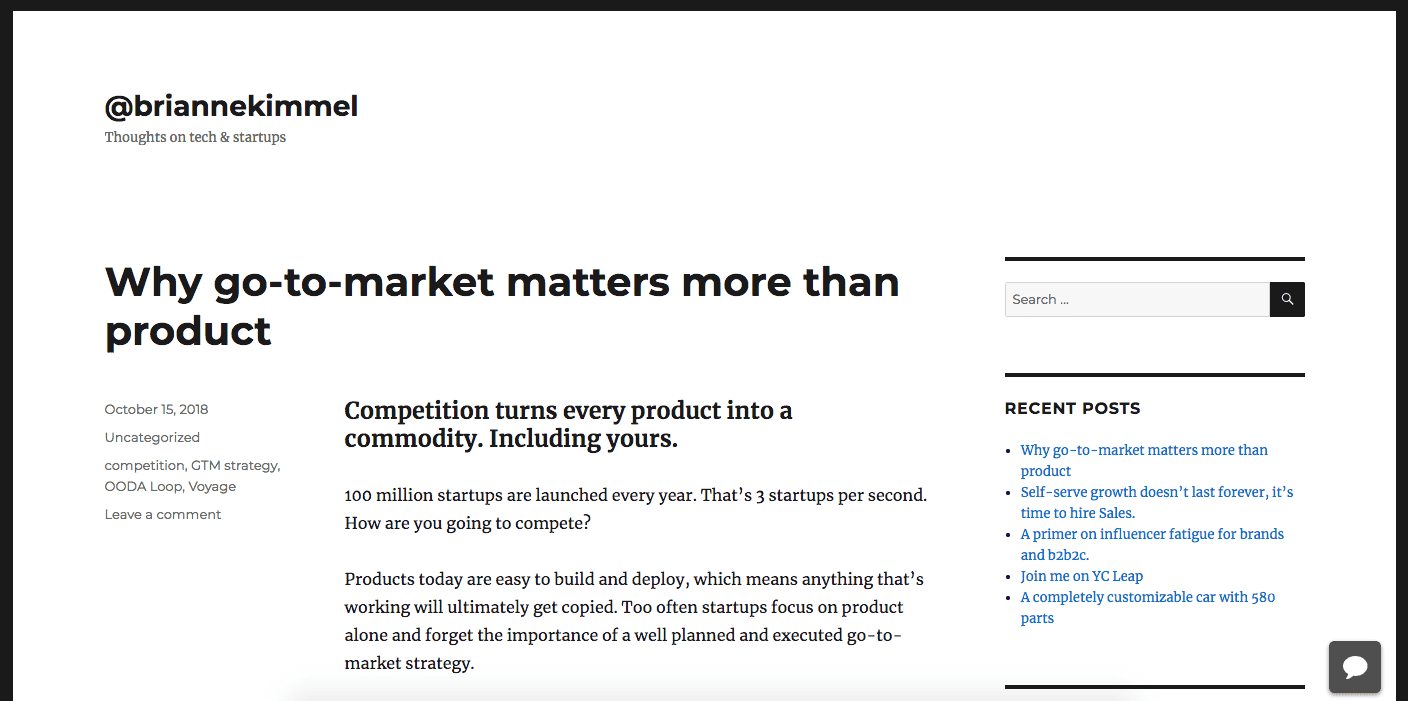
Brianne Kimmel is the go-to-market strategy advisor for the CEO of Voyage, and she previously led Growth Marketing at Zendesk. She also taught over 5,000 students at GeneralAssembly in courses such as Intro to Digital Marketing, Introduction to Social Media Strategy, and Community Driven User Acquisition.
Kimmel shares her growth marketing insights on her website, and you can sign up for her monthly newsletter. Trust me; you don’t want to miss her posts. They’re full of information on growth marketing, startups, and technology. If you want to develop your knowledge of startup growth, check out this post.
5. Noah Kagan (OkDork)

Noah Kagan, the person behind the growth blog OkDork, is so accomplished that we have to ask, “How many lives have you had?” Today, Kagan’s day job is “Chief Sumo” with the Sumo Group, the maker of tools to help companies grow website traffic. It’s the latest in a string of product launches and marketing successes he’s experienced, with brands ranging from Facebook to Mint.
Kagan calls OkDork a guide to “marketing, business musings, online communities, and other things to kill time while you are at work.” That community part is key. He invites readers to participate, comment, and exchange thoughts. And since its December 2016 debut, his podcast, “Noah Kagan Presents,” also calls OkDork home. Check out "The 5 a.m. Challenge" — it happens to be one of this early riser’s favorite episodes.
6. Nir Eyal (nirandfar.com)
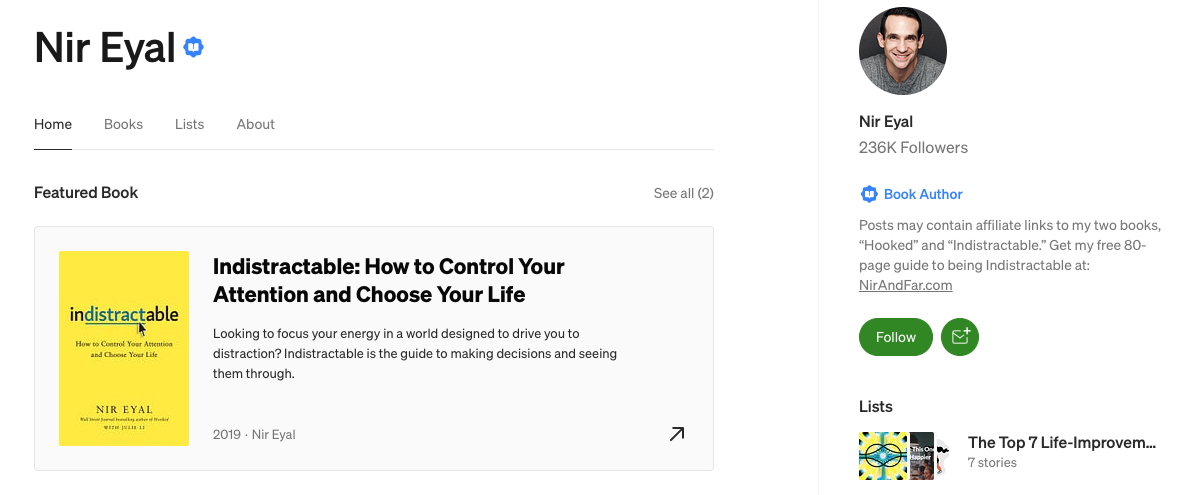
Nir Eyal is an author and lecturer who keenly understands human behavior and psychology. His academic background in psychology and business acumen culminate in a behavioral design-centric approach, making him a top growth hacker. His specialty is creating products that are engaging, habit-forming, and addicting — ensuring that users keep coming back for more.
As an expert in creating attention-grabbing products, Nir also understands that our world is saturated with bids for our attention and the promises of a quick dopamine hit. Accordingly, he authored the book Indistractable: How to Control Your Attention and Choose Your Life, in which he offers valuable guidance on maintaining focus and making effective use of technology without letting it wreak havoc on the reward centers of our brains.
Read his post, 4 Ways to Use Psychology to Win Your Competition’s Customers, for a taste of his style and tips for attracting and keeping them hooked.
7. Lincoln Murphy (sixteenventures.com)

Lincoln Murphy is all about customer success, which we can get behind. His approach to growth hacking is focused on customer engagement and growth, with the mentality that having the best product with the most features and the slickest UI doesn’t guarantee success. Instead, a successful product must solve a real customer problem and provide continuing lifetime value.
He is the founder of Sixteen Ventures, a consulting firm focused on helping SaaS companies gain customers and delight them as well. Using his customer engagement and growth expertise, he has helped over 400 SaaS companies flourish significantly across the entire customer lifecycle.
Check out his article Customer Success: 22 Ways To Reduce Churn With Growth Hacking to learn more about Lincoln’s customer-centric approach to growth hacking.
8. Mostafa ElBermawy (nogood.io)
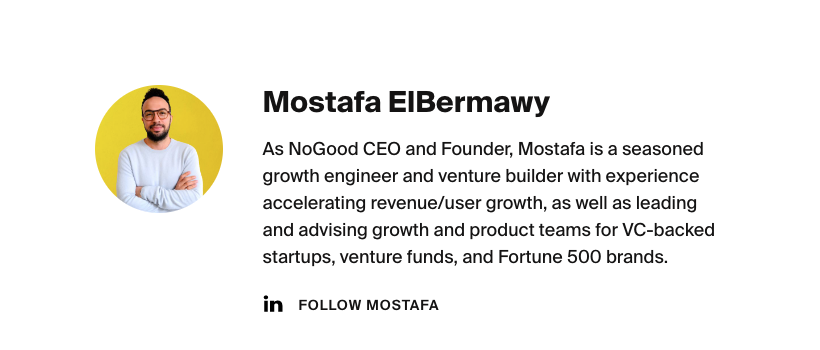
Mostafa ElBermawy is the founder and CEO of nogood.io, an NYC-based growth hacking firm that has driven success for hundreds of notable brands, including TikTok, Amazon, Nike, and Amex, just to name a few. Mostafa and his team have been at it since 2017 and are responsible for millions of dollars in increased revenue across many businesses. Want to see for yourself? Just have a look at their results.
Mostafa takes a data-driven, creative approach toward growth hacking that promises high impact and no fluff. Read his comprehensive guide to Data Science in Marketing for more insight on getting your product in front of the right customers at the right time.
9. Matthew Howells-Barby (mhb.xyz)

Matthew Howells-Barby is a veteran of the growth marketing scene with a penchant for community building and leading high-performing marketing teams. His most recent success was Traffic Think Tank, which began as a Slack community for marketers worldwide to share experiences and learn new strategies, focusing on SEO. The company reached ~$1mm ARR in two years and has since been acquired by SEMRush.
Matthew is passionate about developing growth strategies with a proven track record of success. He’s also a HubSpot alum!
Check out the story of Traffic Think Tank on his website for a first-hand account of his approach to growth.
10. Casey Winters (caseyaccidental.com)
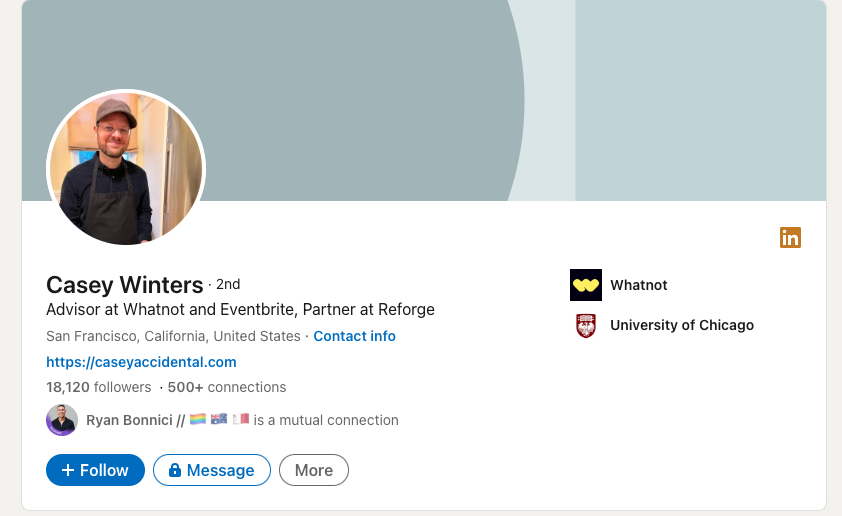
Casey Winters knows a thing or two about growing companies. He began his growth hacking journey leading the marketing team at GrubHub, where he helped multiply their user base by nearly 100x. Next, he led the Growth Product Team at Pinterest. Then he moved on to Eventbrite, where he navigated the company through the pandemic as Chief Product Officer, where he kept the company afloat during a difficult time by pivoting to a product-based strategy.
If you’ve got growth on your mind, Casey is an excellent person to follow. Casey is also active on Quora, so if you’ve got questions about optimizing company growth, he might hop in to lend some advice.
Check out the following video for some very usable insight from Casey on scaling startups and product growth:
When I find a good growth marketing resource, I remember it and hold onto it for dear life. Whether it’s a how-to video on a specific growth topic or an expert’s blog, I treasure every piece of quality advice I can find.
But one thing that’s been trickier to track down is a comprehensive list of the best growth hacks to put into practice or at least experiment with. So what can I try today, for example, with content I already have?
Marketing for an established business versus an up-and-coming one can look very different. A startup is still building brand, customer loyalty, stability, and recognition. A lot of growth marketing for startups may focus on fostering “hype” or anticipation for a release. Exclusivity or invite-only features are a common growth hacking tactic for startups. Working with influencers, capitalizing on viral trends, and sending gifts are other ways startups build on existing followings for growth hacking.
Continual Growth With Growth Hacking
“Growth” can be a little bit of a big, scary term at first. Building and scaling a product or service from scratch might seem like something that requires the help of an expert or a large team. But as these sites show — that’s not the case. With the right approach, resources, and amount of experimentation, you can become a self-taught growth hacker.
From online communities to the HubSpot Growth Platform, you’ll be well on your way. But be patient — you might have to use a combination of these resources and go back to them as you work your way through projects. That’s why we suggest you bookmark all of these sites. Growth takes time, but it’s more than possible.
Editor's note: This post was originally published in February 2022 and has been updated for comprehensiveness.
Sales playbook
.png?width=112&height=112&name=Image%20Hackathon%20%E2%80%93%20Vertical%20(56).png)

.png)




